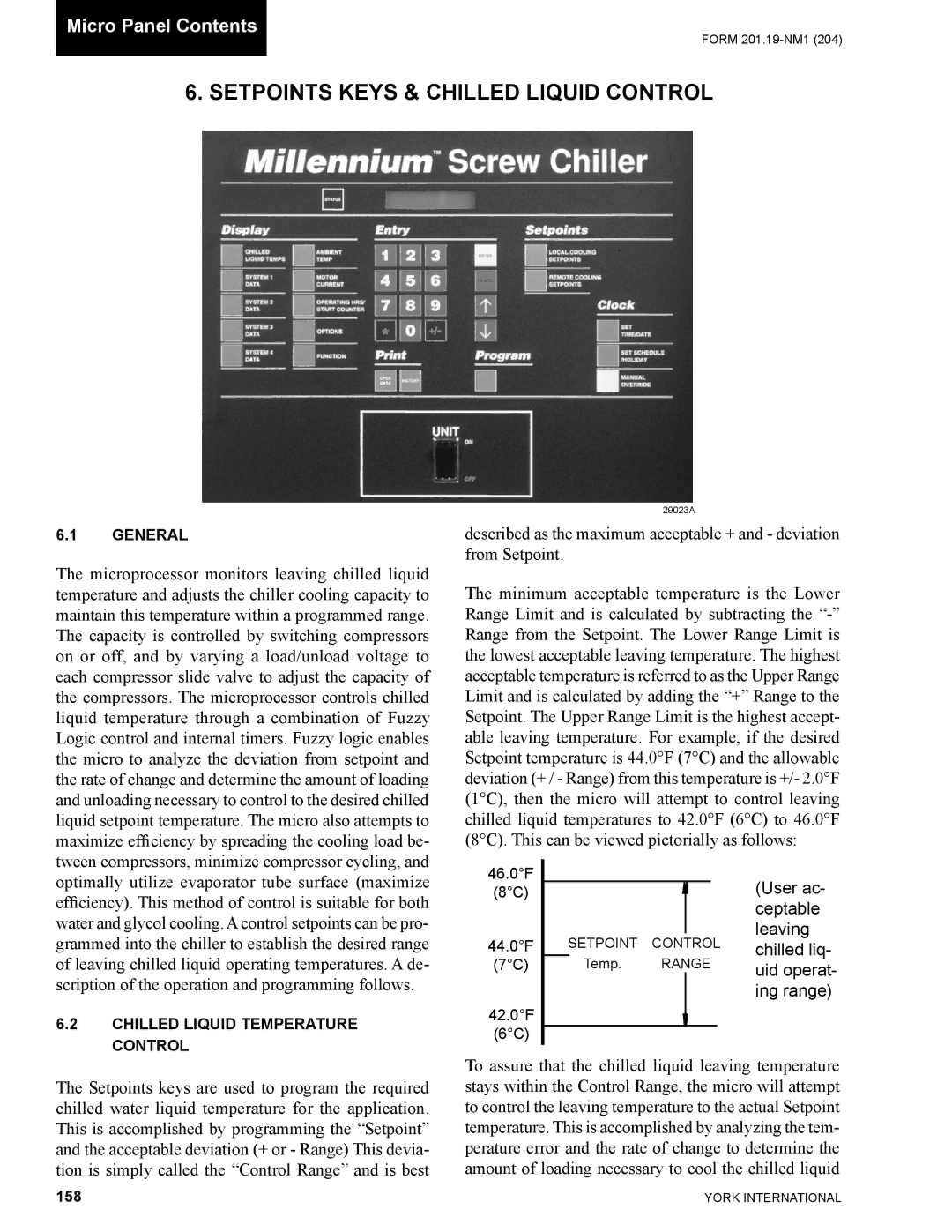
Micro Panel Contents
FORM
6. SETPOINTS KEYS & CHILLED LIQUID CONTROL
6.1GENERAL
The microprocessor monitors leaving chilled liquid temperature and adjusts the chiller cooling capacity to maintain this temperature within a programmed range. The capacity is controlled by switching compressors on or off, and by varying a load/unload voltage to each compressor slide valve to adjust the capacity of the compressors. The microprocessor controls chilled liquid temperature through a combination of Fuzzy Logic control and internal timers. Fuzzy logic enables the micro to analyze the deviation from setpoint and the rate of change and determine the amount of loading and unloading necessary to control to the desired chilled liquid setpoint temperature. The micro also attempts to maximize efficiency by spreading the cooling load be- tween compressors, minimize compressor cycling, and optimally utilize evaporator tube surface (maximize efficiency). This method of control is suitable for both water and glycol cooling. A control setpoints can be pro- grammed into the chiller to establish the desired range of leaving chilled liquid operating temperatures. A de- scription of the operation and programming follows.
6.2CHILLED LIQUID TEMPERATURE CONTROL
The Setpoints keys are used to program the required chilled water liquid temperature for the application. This is accomplished by programming the “Setpoint” and the acceptable deviation (+ or - Range) This devia- tion is simply called the “Control Range” and is best
29023A
described as the maximum acceptable + and - deviation from Setpoint.
The minimum acceptable temperature is the Lower Range Limit and is calculated by subtracting the
46.0°F |
|
|
| (User ac- |
(8°C) |
|
|
| |
|
|
|
| ceptable |
44.0°F | SETPOINT | CONTROL | leaving | |
chilled liq- | ||||
(7°C) |
| Temp. | RANGE | uid operat- |
|
|
|
| ing range) |
42.0°F |
|
|
|
|
(6°C) |
|
|
|
|
To assure that the chilled liquid leaving temperature stays within the Control Range, the micro will attempt to control the leaving temperature to the actual Setpoint temperature. This is accomplished by analyzing the tem- perature error and the rate of change to determine the amount of loading necessary to cool the chilled liquid
158 | YORK INTERNATIONAL |
